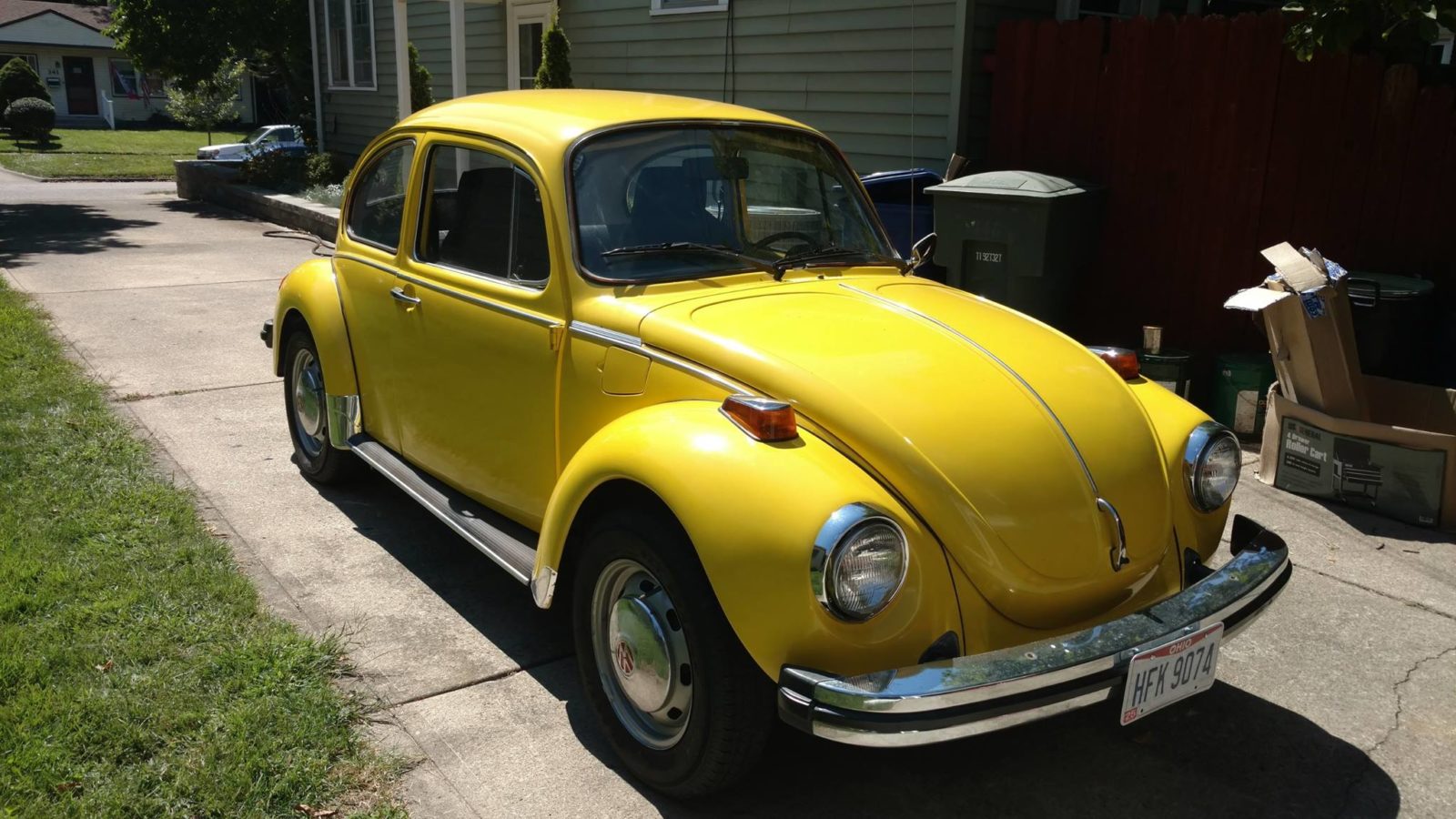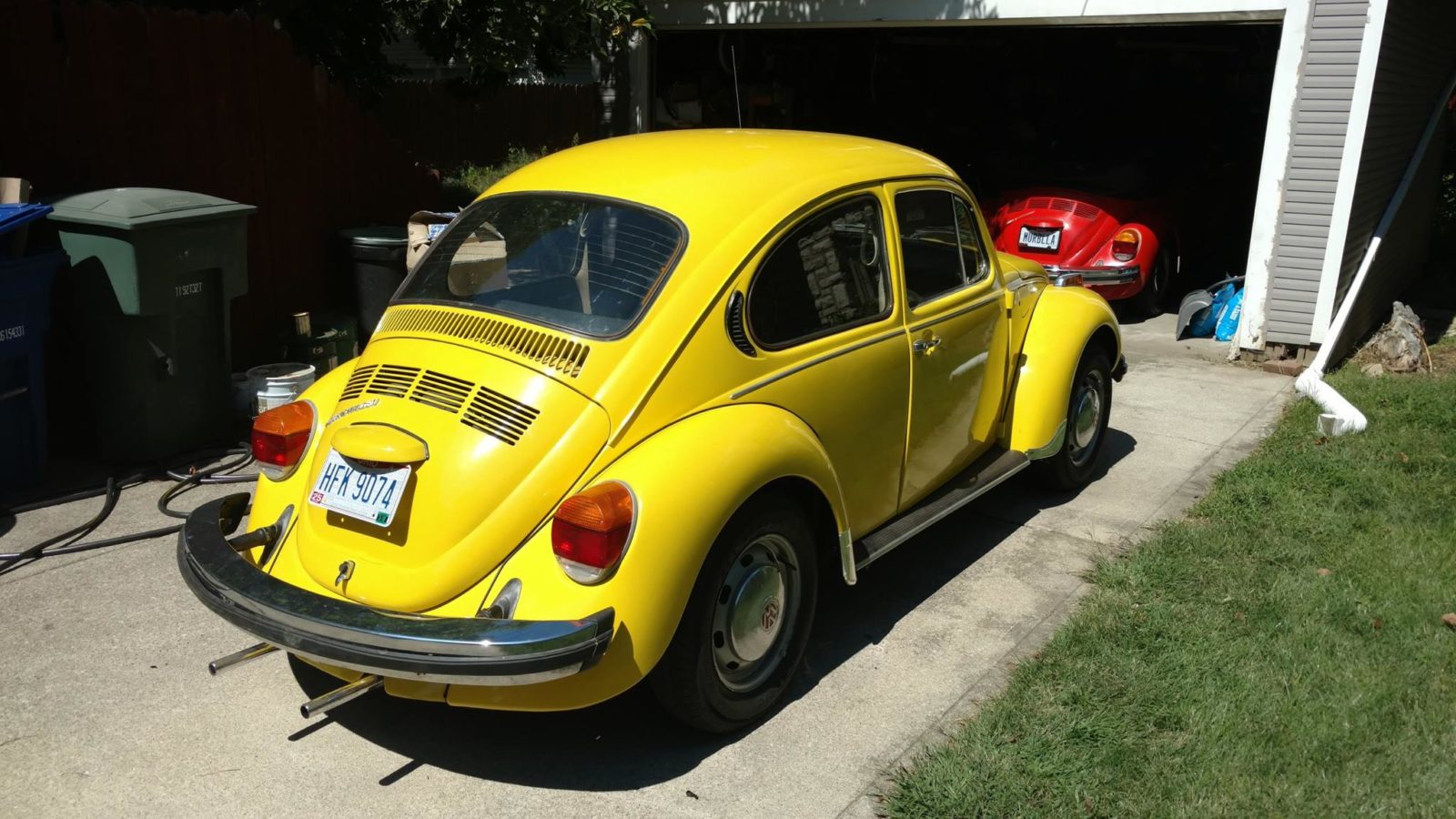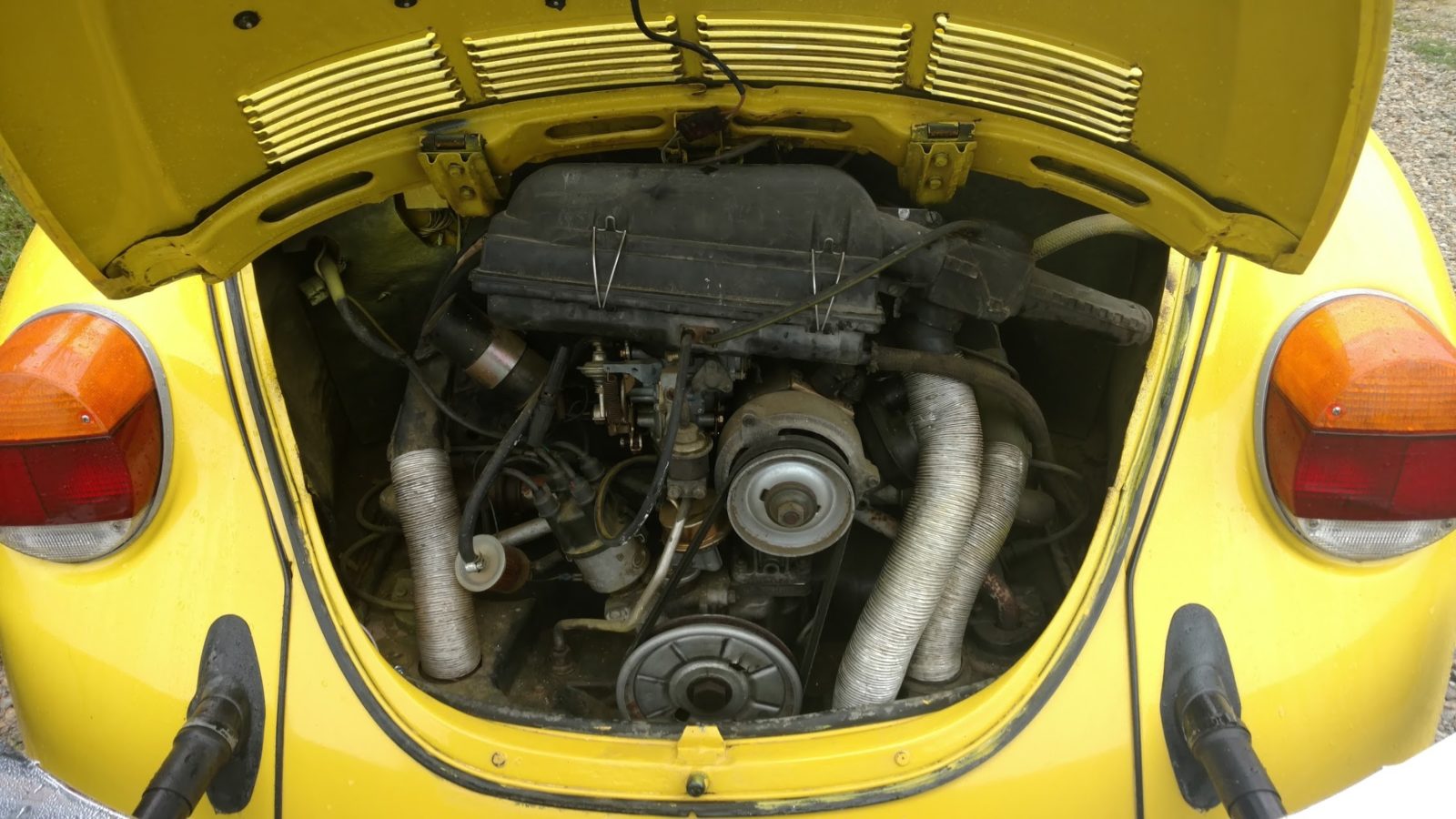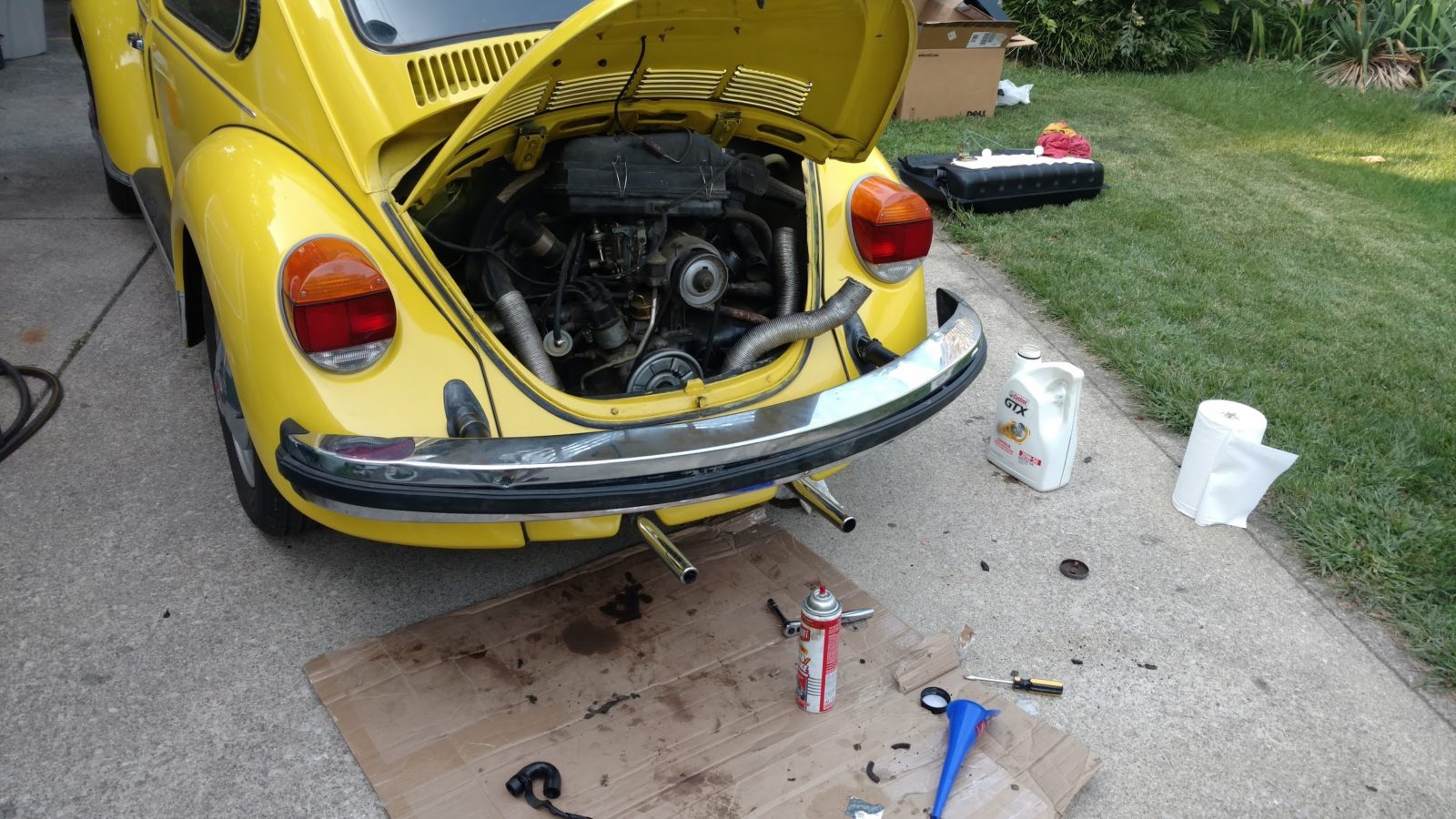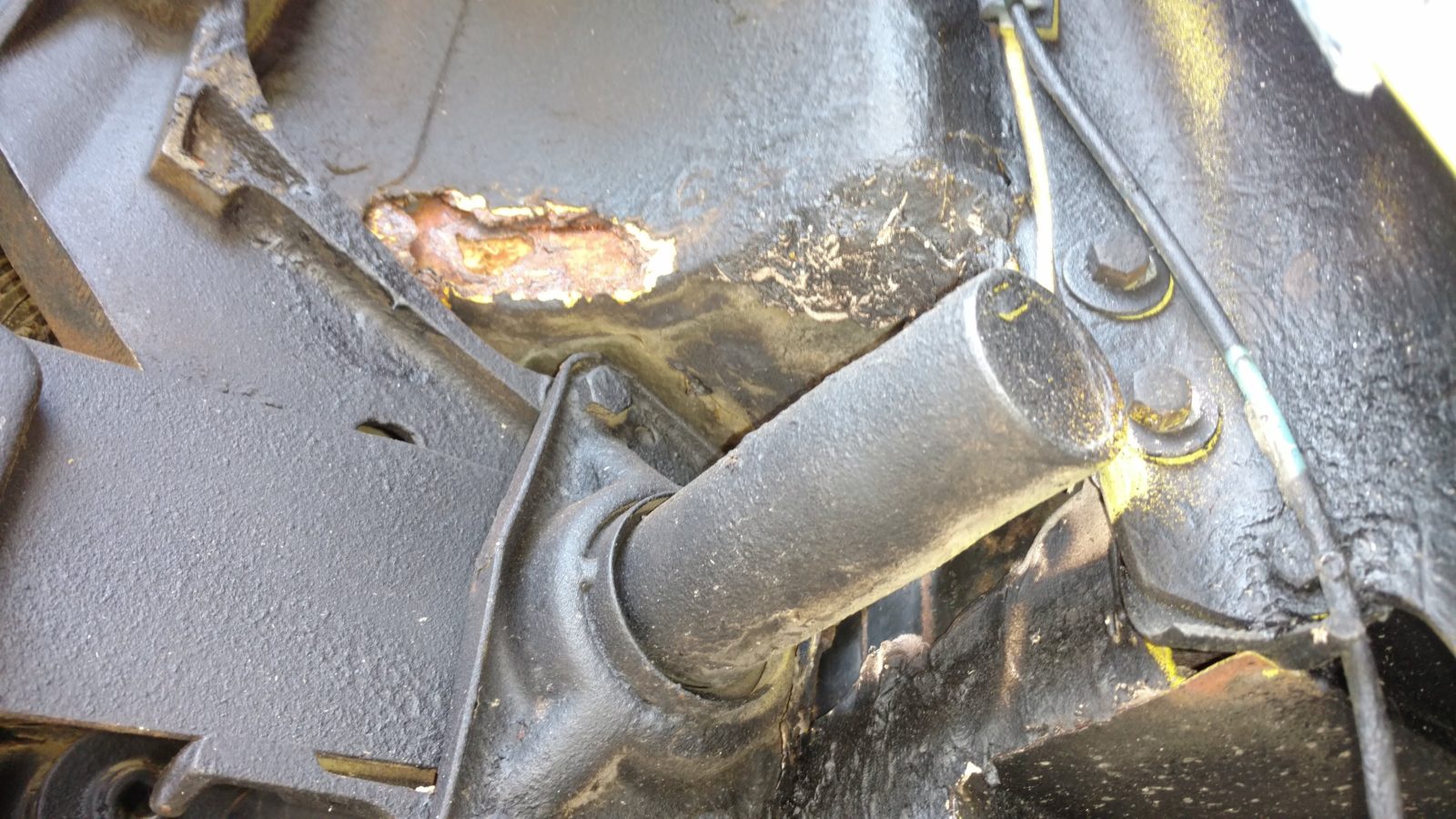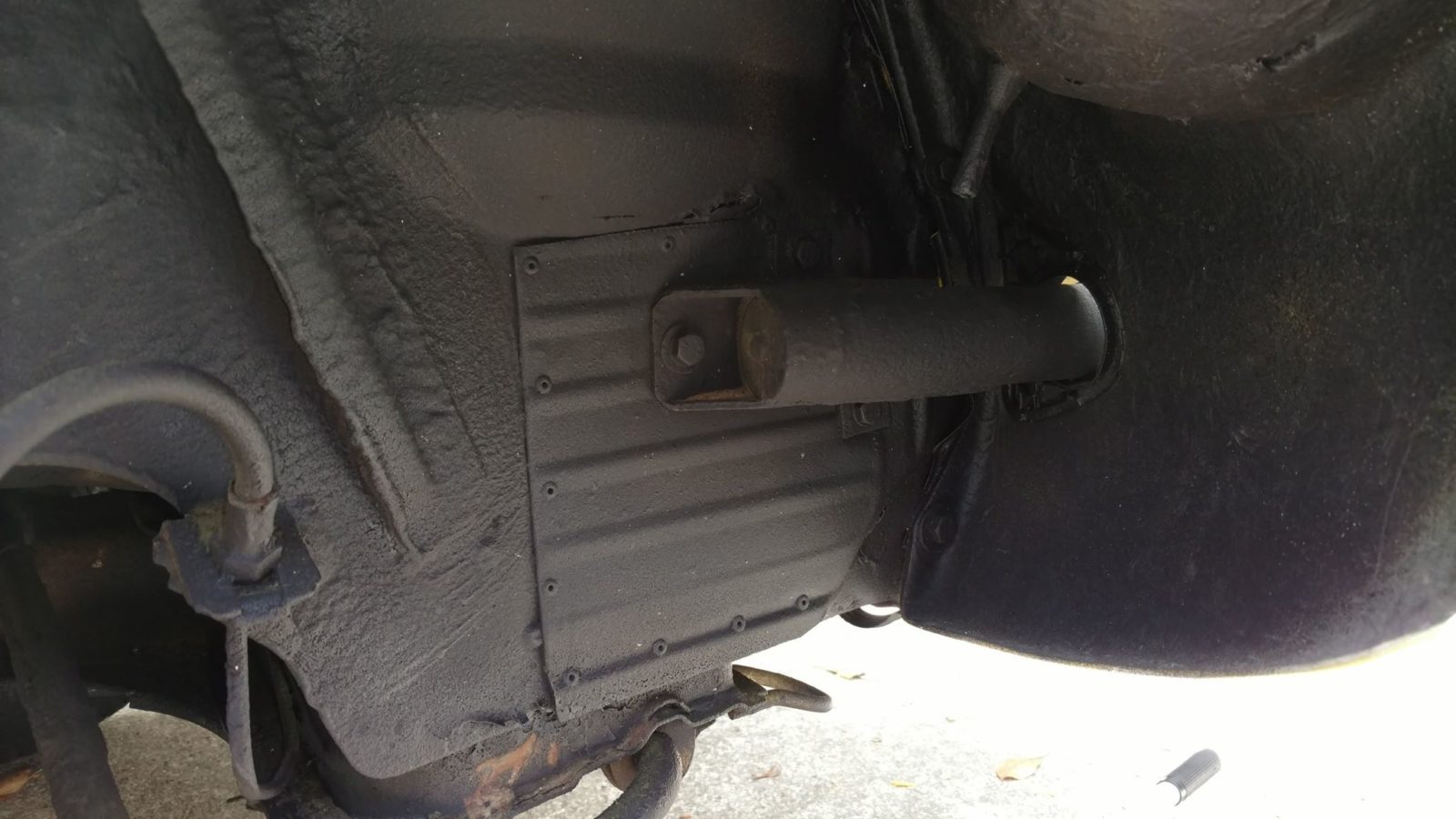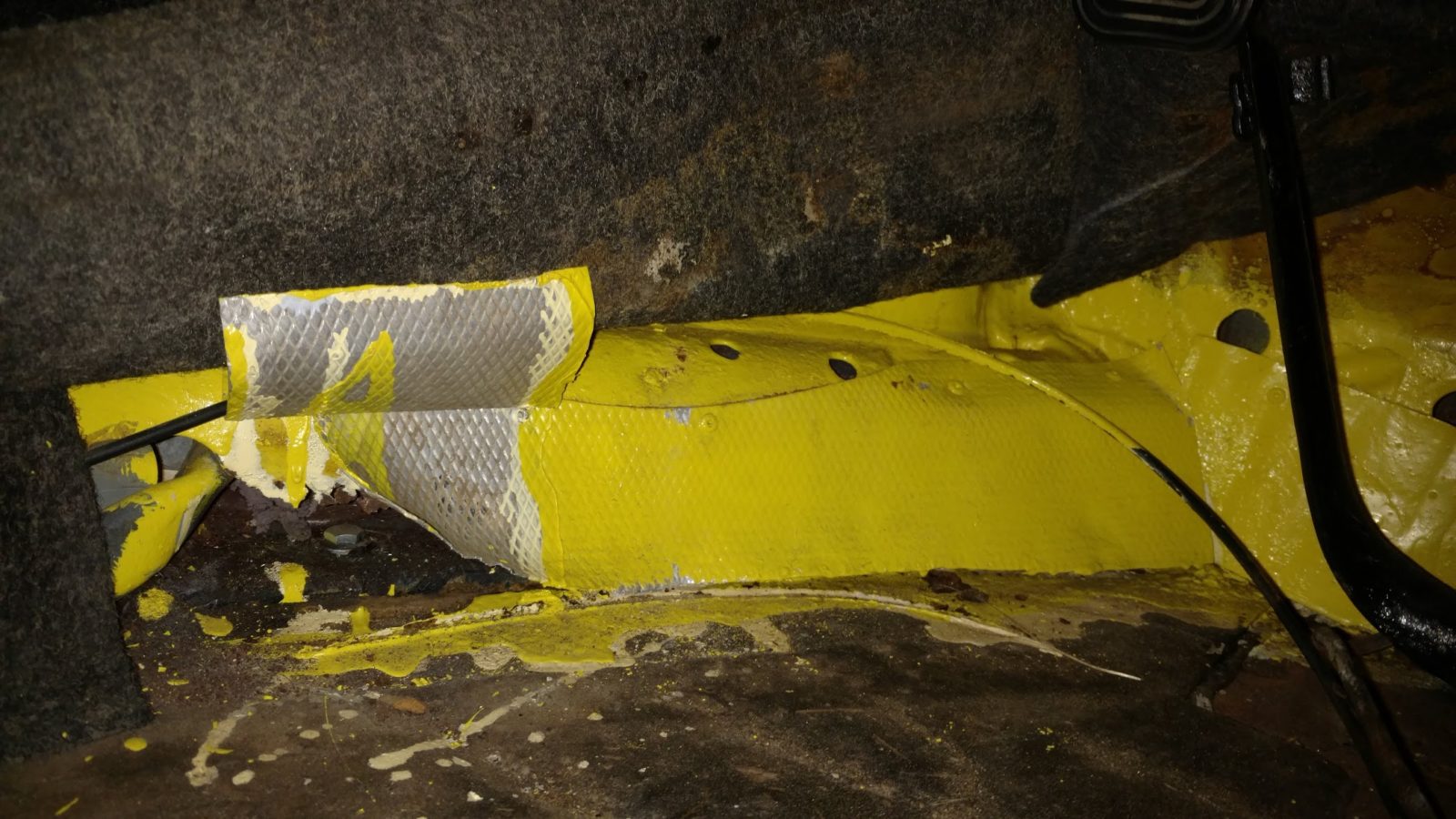The purchase of my 74 Super Beetle was ultimately a major mistake and one that while I’ve come to accept, could and should have really been avoided. I let myself get too far into something before I had a concrete plan in place and also let myself get way too far excited to buy something else.
After getting Murbella, and realizing that given her generally excellent condition and fully working solid original Fuel Injection system, there wasn’t much I could really do… or even want to do… to customize her. She’s far more valuable as a good condition survivor than any restoration or modding could ever due to her right now.
But I really wanted to have a car to dig into and work on and I got it into my head that I wanted to recreate my mother’s original Brilliant Orange 1974 Super Beetle with the dealer package Ansen mag rims. I spent pretty much most of 1974 to 1978 riding in this car on a daily basis (ages 4 to 8) and if anything cemented my love of Beetles it was that car.
I was only recently returned to Beetles, and I should never have let the excitement get to me because I was definitely not ready for a project car, nor ready to really to deal with all of the problems a project car immediately presents. But I get very stupid sometimes and this is indeed one of those times.
So one weekend in September of 2017 I found myself driving all around Ohio looking at Beetles and found this yellow 74 for what at the time I though was a decent price for the condition of the car.
Now the one thing that bit me in the ass was the weather on the day I drove across the state to inspect it. It was raining and the car was on a gravel road and quite frankly, trying to inspect it was just a miserable time. I did the best I could, but it was overcast and gray and dreary.
I ran my magnets over the usual suspect places looking for metal versus rust. I knew the car had fiberglass fenders.
I took it for a test drive and while it needed a brake job, it seemed to run adequately. The engine idled ok.
The fact that the current owner knew nothing about air-cooled engines or VWs should have been my warning sign but I was too excited to find what appeared to be a decent shape 74 Super that I overlooked this point. Basically it seemed like it needed a brake job and had issues with the brake lights.
I ended up making an offer and he accepted.
A week later we drove across the state, I bought the car, dealt with the title, and then on the drive back to Cowtown all of the little things I missed began to become really apparent.
The car would stall at stop signs. The odometer was dead. But surprisingly there was no shimmy on the 90 minute 65 mile per hour drive home.
I made it home so that was a good sign.
Now the car looks really decent from afar and to some extend, even up close. There’s a crack on the dash, which is common for 70’s dashes backed in the sunlight for decades. The seats had had some crappy filling put in them so were way too filled and the headliner had a few rips that had been poorly sewed up.
It wasn’t until weeks later when I began to find the well-hidden rust that would eventually cause me to realize what a huge mistake this purchase had been.
Now the engine was the original stock 1974 AH engine. The only thing that was missing from it was the DVDA Distributor it should have had. It looked no better or worse than and of the other non-rebuilt engines of this era and I was shocked to see the original EGR valve piping and even the emissions dashpot on the carb. (There was no EGR filter below though.)
The first tune up and oil change was an alert to how poorly the engine was maintained. The oil ended up being solid dark black and the plugs were just as bad. This engine had been running rich for ages and definitely had not been maintained well, if at all, the past few years.
I wasn’t really worried, as I expected the engine to need to be fully rebuilt and I planned on loosing my engine rebuilding virginity to this car as one of the first steps to getting it running well, stopping well, and then restoring it.
I ended up having to do multiple oil changes over several days while running Sea Foam through it to try and get clean oil to exist after a few drives.
It was always questionable to drive it as I knew it needed a brake job. Unfortunately, a few weeks later, I would have a total knee replacement on my right knee and the car, now named Żuczek (little beetle in Polish), got parked in the garage next to Murbella and would wait until Spring or so to be worked on.
By late December I was getting around again and decided it was time to get physical and even though I had some limitations with movement, I began the brake job in the freezing cold of the old garage.
Most of November and December was spent buying new brake parts, with a front disk upgrade kit, as well as the usual new pads and such for the rears.
I was not prepared for what I would find.
As I got the car up permanently on stands, I got to spend far more time with the underside and realized that there was far more undercoating than there should be. And of course, it was hiding rusty holes. Hell… hiding is an understatement. It had the usual battery area issues to some degree, but there was some more on the body that I just could not believe was covered up.
Now I expected some rust. Most unrestored cars have it. And surface rust and even basic sheet metal rust repairs I could manage. But I know I had bitten off more than I could do in my garage.
There was some areas I knew had some riveted metal on them, no doubt repairing some holes. That doesn’t mean they wouldn’t be solid, just that I could not risk taking the metal off for now.
As I started to redo the brakes I could not get any of the old hoses or brake lines broken free at the nuts. No amount of PB, or heat, or anything was working. These brakes lines had not been touched in quite a long time at all. Longer than they should have been left alone.
I ended up having to cut them out and ultimately, for the rears, had to buy new backing plates since they were so bad.
The front drums and lines were just as bad, and I couldn’t really remove the lines from the master cylinder. I decided to just pull all of the steel lines on the car and install the set of new steel lines I had bought for Murbella.
Since I could not remove the lines from the master, I had to pull the whole thing and discovered that the brake light issues were due to horribly decayed lines to the brake light switches. I had already seen how bad a lot of the brake fluid was but the master cylinder from at least 1974 was just totally internally rusted and destroyed.
I realized that I probably needed to pull the last remaining line which runs from the MC to the rear and it was during this work that I discovered major issues with rust that I had not detected before.
Pulling the carpet back to get the line out ultimately uncovered vast amounts of hidden rust. The heater channels up front are effectively non-existent, with metal riveted to them. My magnets were picking up the metal under the carpet. Behind the metal? Rust meaning all new heater channels were likely.
Suffice to say that I realized this car was definitely a bit of a mistake for an home amateur trying to learn restoration skills with basic tools.
It was only in early summer, when my monthly engine running stopped working that I discovered the other major issues.
I was having a very hard time getting fuel to the carb. Days of diagnosis left me pulling the fuel tank and lo and behold, the entire thing was full of rust and it was sloughing off now in huge chunks and blocking the fuel exit to the tunnel.
The fuel tank would need to be cleaned out, resealed, and restored.
The frame head cover appeared to be rusted through and covered in bedliner.
By this time I had already decided that my skill set was never going to be good enough to deal with these problems, regardless if my whole restomod process was going to be a learning experience for me.
Learning to do basic body panel welding is one thing. That will help me replace floor pans, do basic sheet metal repairs, etc. The rust on this car was just too great for me to even think of tackling at this stage knowing I don’t have access to the metal cutting and tools to fit aftermarket parts and weld them.
By mid-summer I had started looking for a replacement for the 74, knowing that I would likely not get out of if what I had bought for it. And ethnically, I just can’t cover up all this cancer and pass it on to the next owner like I didn’t know it is there. I am just not that kind of person, much like I would not want someone to intentionally do that to me.
By September, I found the 72 Super Beetle and transferred the Żuczek name to it. But now the car had evolved into being named Żuczek Brzęczyszczykiewicz, one of the most complex combinations of letters possible for a Polish last name.
The engine is now dropped and serving as the basis for the 72’s new basic dual carb rebuild. The 72’s engine will go into the 74 and come spring, I will get the brake lines back in, try to get the 74 running, stopping, and steering, and sell it off as a project for someone with better skills than I.
I could keep it, using it as a possible upper body donor for whatever I find wrong once the 72 is media blasted, but I would really like for this to find a home with someone that can at least make it a solid daily driver and learn to work on it.
